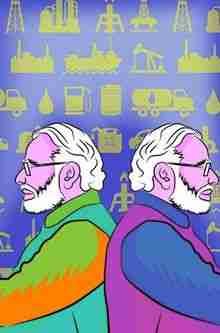New FDI Norms for Defence Industry Could be a Game Changer
If the new initiative can attract foreign and Indian investors, this would lead to a long- overdue ‘corporatization’ of these DPSUs and not to their ‘privatization’, that is much feared by their unions.
With the announcement that the Indian government would permit Foreign Direct I n v e s t m e n t ( F D I ) i n d e f e n c e
manufacturing to be increased from 49 per cent to 74 percent under the automatic route, the question that’s being asked today is, “What was the need for announcing new FDI norms for the defence sector when the country’s economy needs to be revived?” The reasons are two. For one, this measure is not going to cost the country anything. It would, however, bring in more funds into the defence industrial complex, which has been crying for reforms. And the other is that such an opportunity comes rarely, so with some major economic initiatives being taken now was the chance to do this too — so it’s been done.
India continues to be one of the world’s biggest arms purchasers, with the wish list of its armed forces standing at over $200 billion for the next decade. This has made India a favourite of arms exporters, especially from the US, France and Russia. And India hasn’t been shy in using this ‘buying power’ to extract diplomatic favours! But the latest announcement to open up FDI in defence manufacturing and the need to create a negative list for imported weapons, could change it all. This should give a boost to the PM’s ‘Make in India’ initiative, which has achieved little in the defence sector, and reduce India’s import bill on weapons purchase.
The reason why India produces state-of-the-art rockets and missiles is that India’s rocket scientists have had to function within the strategic restrictions imposed by the advanced countries to ensure no one enters their ‘big league’. So, India’s scientists have produced satellite launch systems and missiles that are sought after by others now. However, these very (P5) countries were happy to sell weapons systems they have produced, with few restrictions. Hence, India’s armed forces bought all big-ticket defence equipment – often as crucial purchases – from abroad, arguing that India’s defence public sector undertakings (DPSUs) had failed to meet their expectations. And even if the private sector did produce first-rate systems – like the artillery gun by Bharat Forge – they were kept out of the corridors of South Block by a military-bureaucracy combine.
Earlier on, in 2016, the Modi government had hoped that a revised FDI limit of 49 per cent via the automatic route and also 100 per cent on a case-to-case basis, would attract FDI in the defence sector. But in 2017-18, India received $0.01 million, and in 2018-19
$2.18 million dollars. That’s virtually nothing. But now, if the foreign original equipment manufacture (OEM) can control 74 per cent of the company that it invests in, then it should be willing to invest, as it could change the ‘sarkari’ work culture of the DPSUs they invest in and thus produce world-class military technology. It was reportedly for this reason that a deal with Dassault Aviation, the makers of the Rafale fighter jets, was held up for so long. They refused to have an Indian PSU, HAL, as their partner.
Most of the big business houses in India – that have set up large plants and manufacturing bases – are deeply frustrated with the DPSUs and their babu bosses who have ensured that things remain as they are. This has led to the inability of India to attract FDI in defence PSUs. In turn, it has stalled the growth of an effective defence manufacturing base in India and also led to the sideling of the private sector in defence production. The delays in taking decisions, placing of ‘ad hoc’ orders, the cancellation of tenders and the unreasonable qualitative requirements by the Armed Forces, has only left a handful of determined companies in the fray fordefence manufacturing.
But if the new initiative can attract foreign and Indian investors, this would lead to a long-overdue ‘corporatization’ of these DPSUs and not to their ‘privatization’, that is much feared by their unions. It would also give our private sector a level playing field to indigenize the inventory of India’s Armed Forces. Currently, all three services are in desperate need for a long list of weapon systems that are essential for the country’s security needs. These won’t go away – despite the huge impact of the coronavirus pandemic on the economy – especially as the China-Pak combine works to keep India unsettled from cross-border terrorism to territorial threats. No othercountry in the world faces two nuclear-armed countries who are also belligerent neighbours, and whose strategic aim is to challenge India’s rise.
However, this process of producing the entire wish list of the Armed Forces will take many years. Past experience has shown that the production of any major equipment for the armed forces has taken from 16 years (for the army’s Arjun tank) to 30 years (for the Tejas fighter aircraft). And the blame for all this delay must also go to India’s Armed Forces. They make an unreasonable list of what all the military platform must have – called GSQRs – and their trial process is very lengthy too. Finance Minister Nirmala Sitharaman had referred to this in her recent speech on the changes in FDI norms. She would know about this, having been India’s defence minister earlier.
But things could change now. What India immediately needs to do is to simplify its defence procurement process and procedures, place sufficient orders to Indian companies, and allow a reasonable time for their production to be completed. But above all, it must speed up the decision making process. For this, a long term strategy needs to be adopted, that would require much greater interaction between the armed forces and the DPSUs and private defence companies — so that the OEMs and Indian defence manufacturers can now plan to expand their hi-tech base soonest and the start of training programmes by the military on what it needs, to give the industry clarity. And as all this will take time, the Armed Forces should be given a 5- year window to purchase what they urgently require to defend India.
Equally importantly, the DPSUs and India’s industry need to be assured purchase orders as also an unambiguous export policy on defence equipment, which is produced but not absorbed by our Armed Forces. India needs to shed its ‘Nehruvian’ moral grandstanding and begin exporting items that are already ready within its DPSUs or private manufacturers. The DRDO itself has about 2000 items that it could easily export to developing countries.
If Israel could become a major defence exporter having become a nation in 1948 at about the same time as India became independent, why shouldn’t we aspire to become a major arms exporter in a decade or more? India has the brains and the desire in its defence industry to do so. Only the hurdles have been too many. China has become one of the top five arms exporters – with its main customers being Pakistan, Bangladesh and Myanmar – even as China remains a major importer of weapon platforms.
There is no reason – but the restrictions within – why India can’t do the same.



